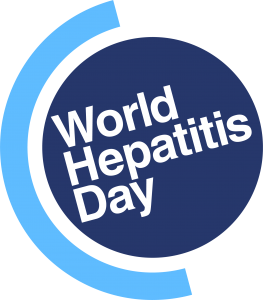Jul
05

Posted by seancorning on July 5th, 2022
Posted in: Blog
Tags: Health observances, world hepatitis day
 Later in July, on the 28th, is World Hepatitis Day. This year’s theme is that Help Can’t Wait and It’s Time to Act, aiming to raise awareness of viral hepatitis, communicate the urgent need for action and to highlight the importance of hepatitis testing and treatment. It’s organized by the World Hepatitis Alliance, which is made-up of over 300 members across 100 countries. One person dies every second from a viral hepatitis related illness, even though currently existing prevention, testing and treatment services could prevent these deaths. This totals to over 1.1 million lives lost each year to hepatitis B and C alone.
Later in July, on the 28th, is World Hepatitis Day. This year’s theme is that Help Can’t Wait and It’s Time to Act, aiming to raise awareness of viral hepatitis, communicate the urgent need for action and to highlight the importance of hepatitis testing and treatment. It’s organized by the World Hepatitis Alliance, which is made-up of over 300 members across 100 countries. One person dies every second from a viral hepatitis related illness, even though currently existing prevention, testing and treatment services could prevent these deaths. This totals to over 1.1 million lives lost each year to hepatitis B and C alone.
Interested in getting involved? The campaign has a variety of ways to do so, from spreading the message to hosting World Hepatitis Day events. Learn more on how to get involved!
Hepatitis is a broad term for inflammation of the liver. This can be short-term (acute) or long-term (chronic) and can be caused by a variety of factors. The morst common causes include: viral infection, heavy alcohol use, toxins and autoimmune reactions. The most common type is viral hepatitis, which can be caused by a number of different viruses, with hepatitis viruses A, B and C being the most common in the US. Each of these viruses is distinct from the others, and can spread in different ways, have different effects and are treated differently. You can learn more about each of these viruses on the NIDDK website. On crucial difference is that Hepatitis B, C and D can cause either acute or chronic hepatitis, while A and E generally only cause acute hepatitis. The persistence of chronic hepatitis often leads to complications such as cirrhosis, liver failure, and liver cancer. In terms of prevention, hepatitis A and B have vaccines, while C, D and E do not. Increasing awareness of the need to vaccinate is a major part of this year’s campaign, as only 43% of children recieve the hepatitis B birth dose vaccine. Hepatitis C prevention targets transmission, which usually occurs through the exchange of blood or other bodily fluids. Often this takes the form of reusing needles, accidental exposure to contaminated needles or transmission from an infected mother to their baby during birth.
All these factors highlight how critical it is to reduce the impact of hepatitis on the world. If you’re interested in learning more, check out the links below.